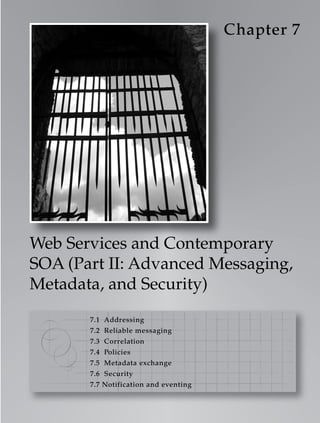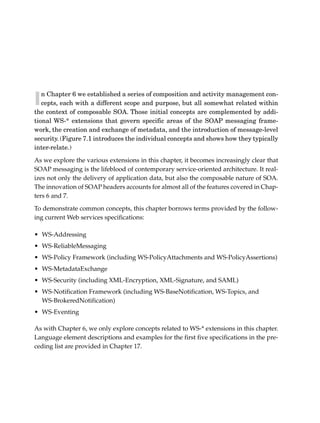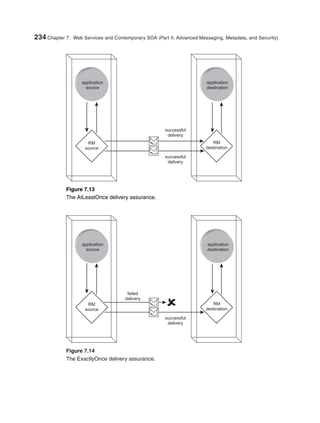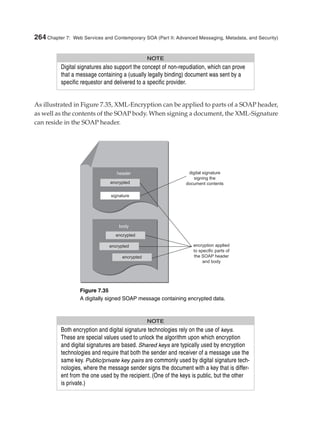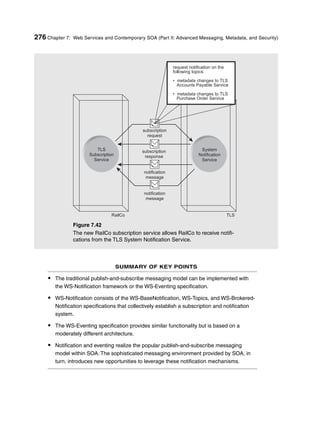This chapter discusses advanced concepts in service-oriented architecture (SOA) including reliable messaging, addressing, metadata exchange, and security. It focuses on specifications like WS-Addressing, WS-ReliableMessaging, WS-Policy and WS-Security that govern areas like messaging, metadata creation and exchange, and security. These concepts increase the sophistication and capabilities of SOAP messaging in SOA, enabling features like identifying specific service instances, ensuring reliable delivery of messages, and securely exchanging metadata.
